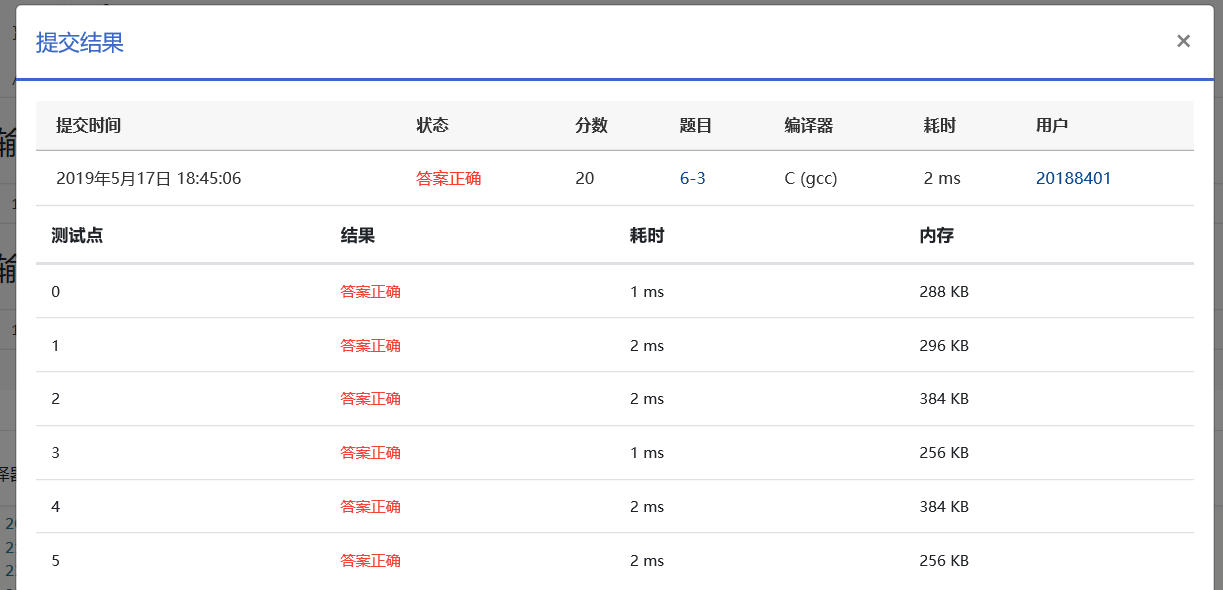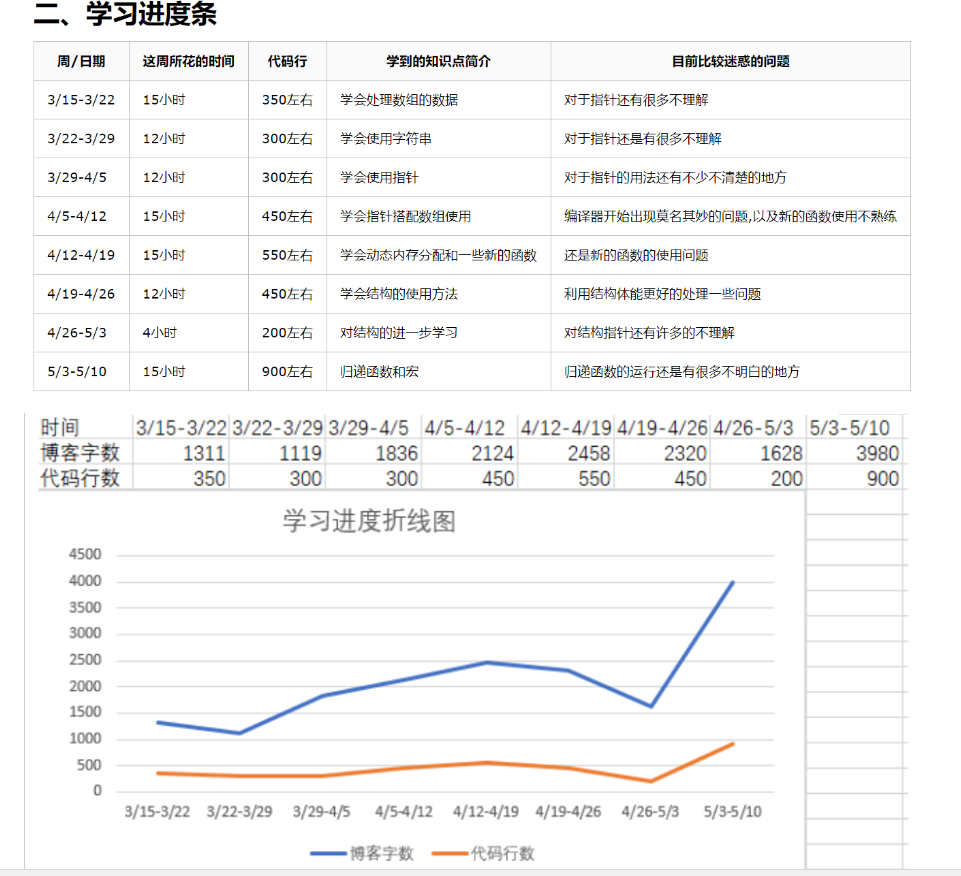一.作业头

二.基础题
6-1 计算最长的字符串长度 (15 分)
本题要求实现一个函数,用于计算有n个元素的指针数组s中最长的字符串的长度。
函数接口定义:
int max_len( char *s[], int n );
其中n个字符串存储在s[]中,函数max_len应返回其中最长字符串的长度。
裁判测试程序样例:
#include <stdio.h>
#include <string.h>
#include <stdlib.h>
#define MAXN 10
#define MAXS 20
int max_len( char *s[], int n );
int main()
{
int i, n;
char *string[MAXN] = {NULL};
scanf("%d", &n);
for(i = 0; i < n; i++) {
string[i] = (char *)malloc(sizeof(char)*MAXS);
scanf("%s", string[i]);
}
printf("%d
", max_len(string, n));
return 0;
}
输入样例:
4
blue
yellow
red
green
输出样例:
6
1.实验代码
int max_len( char *s[], int n )
{
int max=0;
int i;
for(i=0;i<n;i++){
if(strlen(s[max])<strlen(s[i]))
{
max=i;
}
}
return strlen(s[max]);
}
2.设计思路
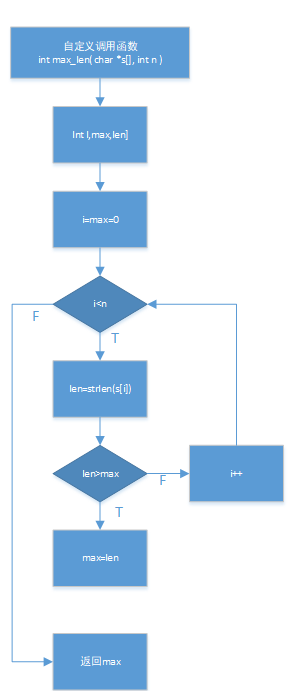
3.遇到的问题及解决方法
总是有一些小的错误
4.运行结果截图
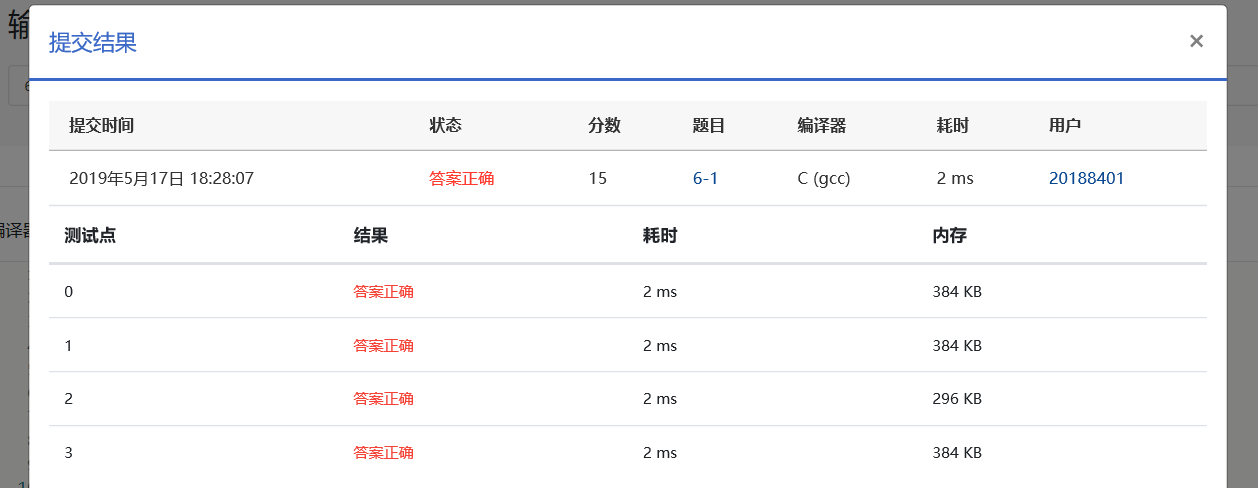
6-2 统计专业人数 (15 分)
本题要求实现一个函数,统计学生学号链表中专业为计算机的学生人数。链表结点定义如下:
struct ListNode {
char code[8];
struct ListNode *next;
};
这里学生的学号共7位数字,其中第2、3位是专业编号。计算机专业的编号为02。
函数接口定义:
int countcs( struct ListNode *head );
其中head是用户传入的学生学号链表的头指针;函数countcs统计并返回head链表中专业为计算机的学生人数。
裁判测试程序样例:
#include <stdio.h>
#include <stdlib.h>
#include <string.h>
struct ListNode {
char code[8];
struct ListNode *next;
};
struct ListNode *createlist(); /*裁判实现,细节不表*/
int countcs( struct ListNode *head );
int main()
{
struct ListNode *head;
head = createlist();
printf("%d
", countcs(head));
return 0;
}
输入样例:
1021202
2022310
8102134
1030912
3110203
4021205
#
输出样例:
3
1.实验代码
int countcs( struct ListNode *head )
{
int num = 0;
while(head!= NULL)
{
if(head->code[1] == '0' && head->code[2] == '2')
num++;
head = head->next;
}
return num;
}
2.设计思路
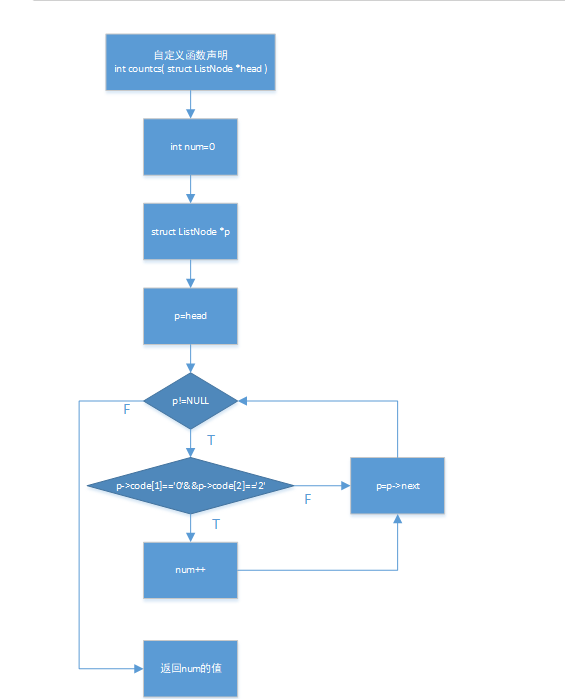
3.遇到的问题及解决方法
4.运行结果截图
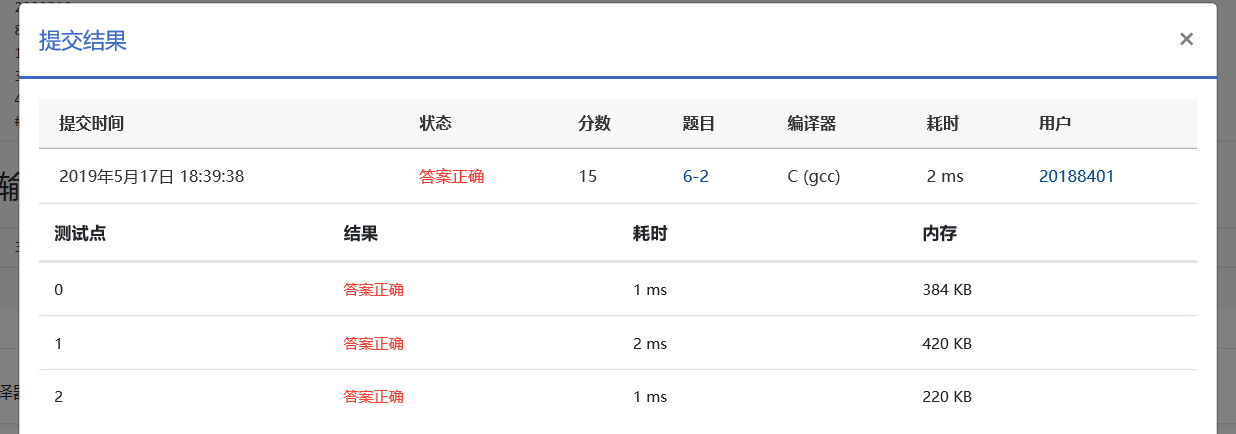
6-3 删除单链表偶数节点 (20 分)
本题要求实现两个函数,分别将读入的数据存储为单链表、将链表中偶数值的结点删除。链表结点定义如下:
struct ListNode {
int data;
struct ListNode *next;
};
函数接口定义:
struct ListNode *createlist();
struct ListNode *deleteeven( struct ListNode *head );
函数createlist从标准输入读入一系列正整数,按照读入顺序建立单链表。当读到−1时表示输入结束,函数应返回指向单链表头结点的指针。
函数deleteeven将单链表head中偶数值的结点删除,返回结果链表的头指针。
裁判测试程序样例:
#include <stdio.h>
#include <stdlib.h>
struct ListNode {
int data;
struct ListNode *next;
};
struct ListNode *createlist();
struct ListNode *deleteeven( struct ListNode *head );
void printlist( struct ListNode *head )
{
struct ListNode *p = head;
while (p) {
printf("%d ", p->data);
p = p->next;
}
printf("
");
}
int main()
{
struct ListNode *head;
head = createlist();
head = deleteeven(head);
printlist(head);
return 0;
}
输入样例:
1 2 2 3 4 5 6 7 -1
输出样例:
1 3 5 7
1.实验代码
struct ListNode *createlist()
{
int x;
struct ListNode *head,*tail,*p;
head=(struct ListNode*)malloc(sizeof(struct ListNode));
head->next=NULL;
tail=head;
while(1)
{
p=(struct ListNode*)malloc(sizeof(struct ListNode));
scanf("%d",&x);
p->next=NULL;
if(x==-1)
break;
p->data=x;
p->next=NULL;
tail->next=p;
tail=p;
}
return head;
}
struct ListNode *deleteeven( struct ListNode *head )
{
struct ListNode *p1,*p2;
int flag;
p1=head;
p2=p1->next;
while(p1->next)
{
flag=0;
if(p2->data%2==0)
{
p1->next=p2->next;
p2=p2->next;
flag=1;
}
if(flag==0)
{
p1=p1->next;
p2=p1->next;
}
}
return head->next;
}
2.设计思路
3.遇到的问题及解决方法
这道题不会写,在网上找到
4.运行结果截图
